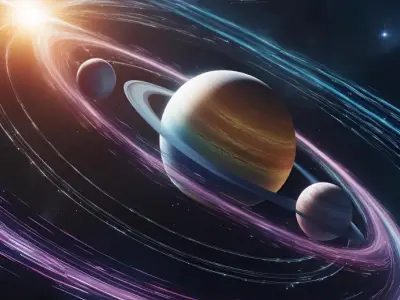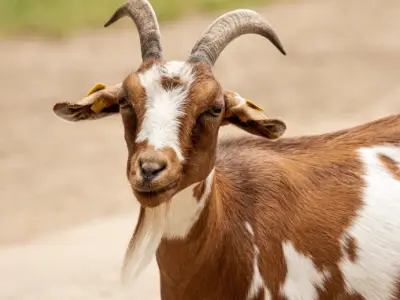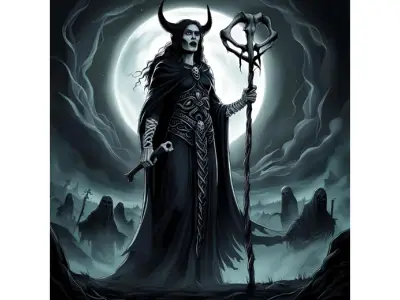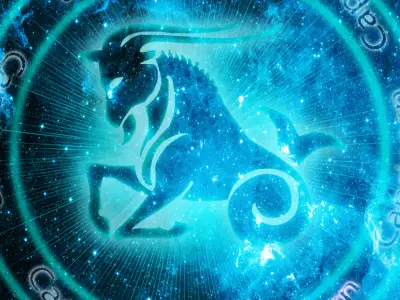Egyptian mythology is a fascinating array of gods and goddesses, each with their unique stories, powers, and symbols. Among these deities, Bastet stands out as a beloved figure. Known as the Egyptian cat goddess, Bastet has an intriguing mix of nurturing and protective qualities. This blog post guides you through the myths, legends, and powers of this remarkable goddess.
Jump to:
Who is Bastet?
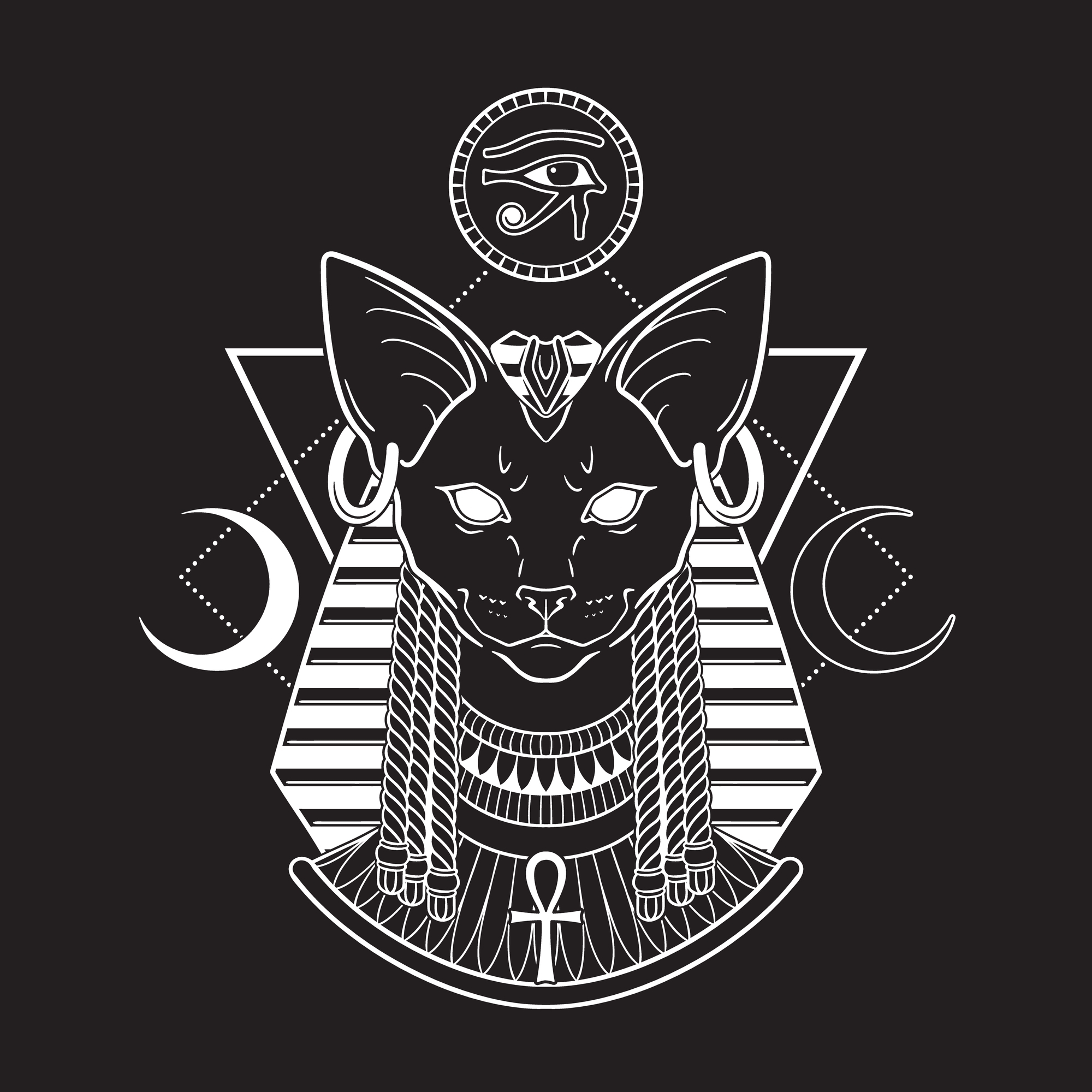
Bastet, also known as Bast, is one of the most worshipped deities in ancient Egyptian mythology. She is often depicted as a lioness or as a woman with the head of a lioness or a domestic cat. Bastet's transformation from a lioness warrior goddess to a more nurturing cat goddess highlights her dual nature – both fierce and gentle.
What is Bastet the Goddess of?
Bastet is primarily known as the goddess of home, fertility, and childbirth, embodying the nurturing aspects associated with motherhood. However, she is also a goddess of protection, particularly for women and children. Additionally, Bastet is associated with music, dance, joy, and love, reflecting the Egyptians' appreciation for these elements in life.
What Did Bastet Protect?
As a goddess of protection, Bastet safeguarded against various forms of evil. She protected homes, particularly those of women and children, from disease and evil spirits. Her protective nature extended to her role in battle, where she was invoked to shield soldiers and ensure victory.
Bastet's Dual Nature
Bastet's dual nature is a fascinating aspect of her mythology. Initially, she was depicted as a lioness, symbolising her fierce and protective qualities. As her worship evolved, she became more closely associated with domestic cats, highlighting her nurturing and gentle side. This duality made Bastet a complex and relatable deity for her followers.
Recommended for you!
Best SellersMyths and Legends of Bastet
Bastet's myths and legends are rich and varied, showcasing her diverse roles and powers.
The Eye of Ra
One of the central myths involving Bastet is her role as the Eye of Ra. In this legend, she is sent by the sun god Ra to destroy his enemies. As the Eye of Ra, Bastet transforms into the ferocious lioness Sekhmet to carry out Ra's will. This myth highlights her protective and vengeful nature, emphasising her role as a guardian.
The Gentle Protector
In contrast to her fierce persona, Bastet is also celebrated for her gentleness and protective nature. She was believed to protect households from evil spirits and diseases, especially those affecting women and children. Many households kept statues or amulets of Bastet to invoke her protection and blessings.
Festivals and Celebrations
Bastet was honoured with grand festivals in ancient Egypt, the most famous being the Festival of Bubastis. This celebration, held in the city of Bubastis (modern-day Tell Basta), was marked by music, dancing, feasting, and boat processions on the Nile. It was a time of joy and merriment, reflecting Bastet's association with pleasure and festivity.
What Powers Does Bastet Have?
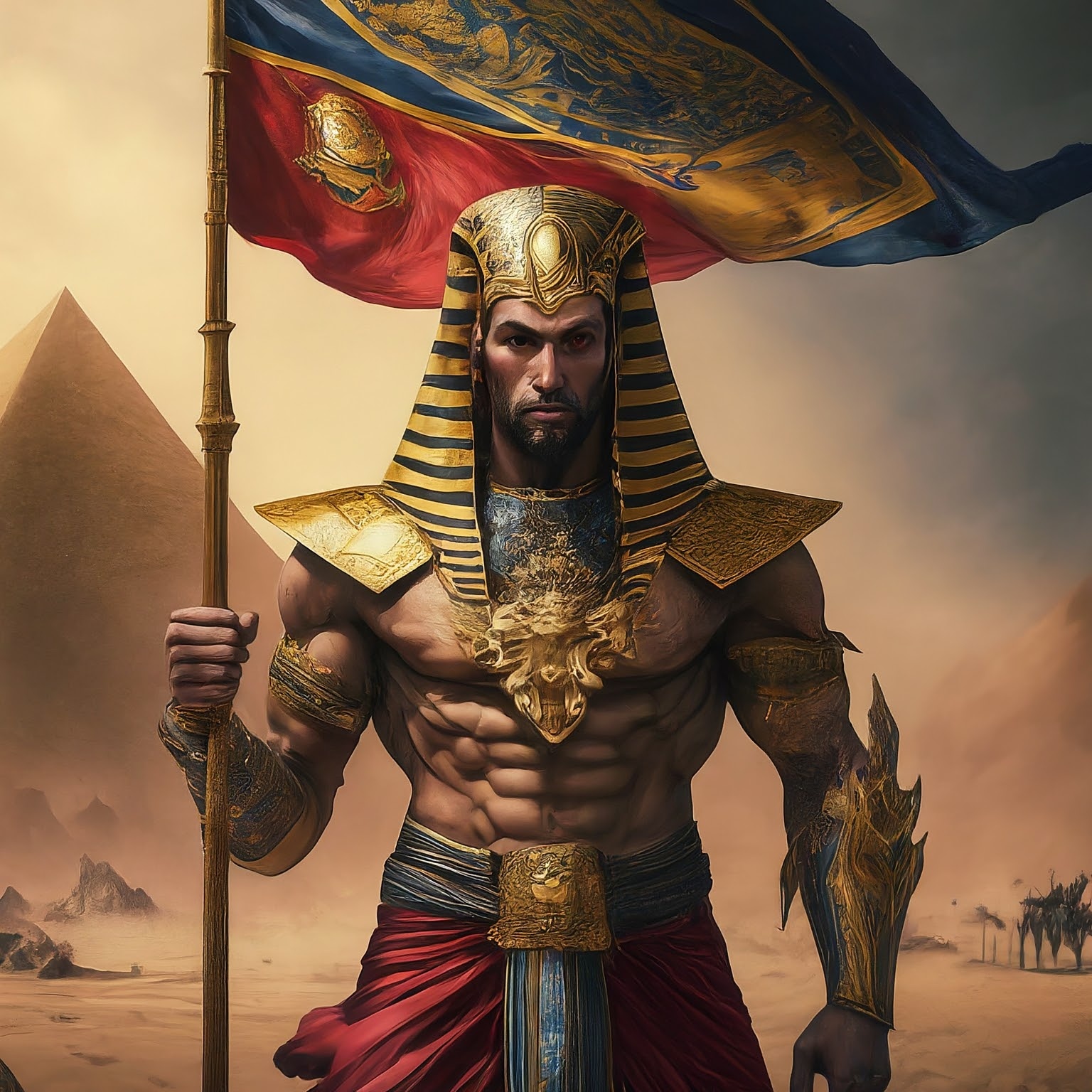
Bastet's powers are extensive, reflecting her status as the goddess of protection, home, fertility, and joy. Her abilities were vast and impactful in both the mortal and divine realms.
- Protector of the Home: Bastet safeguards homes from evil spirits and misfortune, particularly protecting women and children. She ensures a safe and nurturing environment for her devotees.
- Nurturing and Fertility: Bastet embodies fertility and motherhood, providing blessings of fertility, childbirth, and nurturing care. She is invoked by those seeking to conceive and for the protection of mothers and children.
- Joy and Music: Bastet is associated with music, dance, and joy, bringing happiness and festivity to her followers. Her presence is invoked during celebrations to ensure a joyful atmosphere.
- Healing and Health: Bastet has the power to heal the sick and protect against disease. Her protective nature extends to ensuring the health and well-being of her devotees.
- Warrior and Protector: Despite her gentle nature, Bastet can transform into a fierce lioness to protect her followers. She embodies the strength and courage of a warrior, defending against any threat.
Symbols of Bastet
Bastet's symbols reflect her multifaceted role as the goddess of protection, home, fertility, and joy. Each symbol carries deep significance and highlights different aspects of her divine responsibilities.
- Cat: The cat is the primary symbol of Bastet, representing her nurturing and protective nature. Cats were highly regarded in ancient Egypt and seen as embodiments of the goddess herself. The domesticated cat symbolises her gentle, caring aspects, while the lioness reflects her fierce, protective qualities.
- Sistrum: The sistrum is a musical instrument often associated with Bastet, symbolising her connection to music, dance, and joy. The sistrum's sound was believed to ward off evil spirits and invoke the goddess's protective presence. It highlights her role in bringing happiness and festivity to her followers.
- Ankh: The ankh is a well-known Egyptian symbol representing life and fertility. As a symbol associated with Bastet, it highlights her role in ensuring the health and prosperity of her devotees. The ankh's association with life and rebirth aligns with Bastet's nurturing and protective nature.
- Lioness: Although Bastet is often depicted as a domestic cat, her earlier representations as a lioness remain significant. The lioness symbolises her strength, courage, and ferocity in protecting her followers. This dual imagery of a gentle cat and a powerful lioness encapsulates the full spectrum of Bastet's attributes.
- Eye of Ra: In some myths, Bastet is associated with the Eye of Ra, symbolising her role as a protector and avenger. The Eye of Ra represents the destructive and vengeful aspects of the goddess when defending her people from threats. This symbol highlights her ability to transform into a fierce warrior when needed.
Bastet's Relationships and Family Tree
Understanding Bastet's relationships and family tree provides insight into her significance and connections within Egyptian mythology.
- Ra: Bastet is often considered the daughter of Ra, the sun god. As his daughter, she shares a special bond with one of the most powerful deities in Egyptian mythology, highlighting her importance and divine heritage.
- Sekhmet: Bastet is sometimes associated with Sekhmet, another lioness goddess. While Bastet represents the gentler aspects of a lioness, Sekhmet embodies the fierce and destructive qualities. In some myths, they are considered two aspects of the same goddess, reflecting the duality of their nature.
- Mihos: Bastet is believed to have a son named Mihos (or Maahes), who is also a lion-headed god. He shares his mother’s protective qualities and is known as a warrior deity, further emphasising the martial aspect of Bastet's nature.
- Ptah: In some traditions, Bastet is considered the consort of Ptah, the creator god and god of craftsmen. Their union symbolises the balance of creativity and protection, combining Ptah's constructive power with Bastet's nurturing and safeguarding nature.
- Anubis: Bastet shares protective duties with Anubis, the god of mummification and the afterlife. While Anubis protects the dead and guides them to the afterlife, Bastet protects the living, creating a balance between life and death.
- Hathor: Bastet is sometimes linked to Hathor, the goddess of love, beauty, and music. Both goddesses share associations with joy, music, and fertility, often overlapping in their roles and attributes.
Bastet's Worship and Legacy
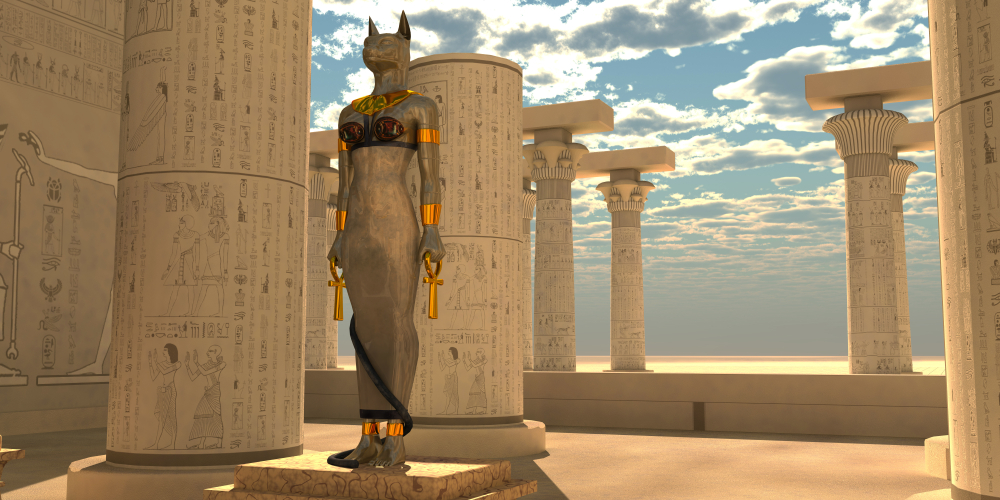
Bastet's significance in ancient Egyptian culture is evident through her extensive worship and the lasting impact she has had over the centuries. Her worship involved various rituals, offerings, and the creation of numerous statues, each maintaining her presence and influence.
The Temple of Bastet in Egypt
One of the most remarkable sites dedicated to Bastet is the temple at Bubastis (modern-day Tell Basta). This temple was a significant centre for her worship and featured stunning reliefs and inscriptions that told the story of Bastet and other gods. Visiting this temple offers a glimpse into the grandeur and spirituality of ancient Egyptian civilisation.
The Mystery of Bastet Statues
Statues of Bastet have been found throughout Egypt, often in large numbers. These statues were believed to house the spirit of the goddess, allowing her presence to be felt in the physical world. The craftsmanship and sheer number of Bastet statues reflect her importance in Egyptian religion.
These statues also served as a means for the goddess to exert her power and provide protection. Many of these statues were placed in homes and temples, where priests performed daily rituals to honour Bastet and invoke her blessings.
How Do You Honour Bastet?
To honour Bastet, ancient Egyptians made offerings of food, drink, and other items. These offerings were meant to appease the goddess and ensure her favour. Common offerings included bread, beer, meat, and incense.Devotees would also keep cats as pets, considering them sacred animals that embodied the goddess's spirit.
Today, those who feel a connection to Bastet may offer cat figurines, symbols of fertility, or other items that represent her power and attributes. Modern worshippers might also create altars adorned with images of Bastet, flowers, and stones associated with her energy, such as tiger's eye and cat's eye. Making these offerings is seen as a way to connect with Bastet's nurturing and protective energy, and her ability to bring joy and health.
Were Cats Sacrificed to Bastet?
While cats were highly worshipped and often mummified as offerings to Bastet, there is little evidence to suggest they were sacrificed in the sense of ritual killing. Instead, they were cared for, and their mummification was seen as a way to honour the goddess and ensure the cats' safe passage to the afterlife.
Bastet in Modern Egyptology
The fascination with Bastet continues to this day. Egyptologists and archaeologists are constantly uncovering new findings related to this ancient goddess. For instance, the discovery of various Bastet statues and temples has provided valuable insights into ancient Egyptian worship practices and beliefs about protection and fertility. The ongoing research and excavations continue to shed light on Bastet's enduring legacy and her significant role in Egyptian mythology.
Fun Facts about Bastet
Bastet's mythology is filled with interesting and fun facts that highlight her unique place in Egyptian mythology.
- Ancient Festivals: The Festival of Bubastis was one of the most popular festivals in ancient Egypt, attracting thousands of people who celebrated with music, dancing, and feasting.
- Sacred Cats: Cats were considered sacred animals in ancient Egypt, and harming one was punishable by death. Cats were often mummified and buried with their owners as a sign of devotion to Bastet.
- Dual Identity: Bastet's dual nature as both a nurturing cat and a fierce lioness goddess illustrates her complex character, embodying both gentleness and strength.
- Iconic Imagery: Bastet is often depicted with a sistrum, a musical instrument that symbolises her connection to music and joy. This instrument was used in rituals to honour her and invoke her protective presence.
- Healing Powers: Bastet was believed to have healing powers and was invoked to protect against diseases, particularly those affecting women and children.
- Modern Influence: Bastet remains a popular figure in modern culture, often appearing in literature, films, and video games as a symbol of protection and femininity.
- Associated Crystals: Protective crystals like tiger's eye and cat's eye are associated with Bastet, believed to embody her nurturing energies.
- Spiritual Symbolism: Bastet is seen as a symbol of home and family, embodying the protective and nurturing aspects of the household.
Recommended for you!
Best SellersFrequently Asked Questions About Bastet
How do you pronounce Bastet?
Bastet is pronounced as "Bas-tet." The name is sometimes also shortened to "Bast."
Was Bastet considered a good or bad deity?
Bastet was considered a benevolent deity, especially to those who honoured her. She was seen as a protector and nurturer, safeguarding her followers and their homes. While she could be fierce when protecting her devotees, she was generally regarded as a positive and caring goddess.
What items are associated with Bastet?
Items associated with Bastet include cat figurines, statues of the goddess, and symbols like the sistrum, ankh, and the Eye of Ra. Additionally, offerings such as food, drink, flowers, and incense were common in rituals dedicated to her.
Who is the Greek equivalent of Bastet?
The Greek equivalent of Bastet is often considered to be Artemis. Both goddesses share associations with protection, animals, and feminine strength.
Where was Bastet buried?
There is no specific burial site for Bastet, as she is a deity rather than a historical figure. However, the city of Bubastis (modern-day Tell Basta) was a major centre of her worship, and many statues and relics dedicated to her have been found there.
What weapon did Bastet use?
While Bastet is primarily known for her nurturing and protective nature, in her more ferocious lioness form, she would use her claws and teeth as weapons to defend her followers and ward off evil.
What is the spiritual meaning of the goddess Bastet?
The spiritual meaning of Bastet centres on protection, nurturing, and joy. She embodies the balance of strength and gentleness, making her a powerful symbol of both home and family as well as warrior-like protection.
Is Bastet considered a virgin goddess?
Unlike some other goddesses in ancient mythology, Bastet was not specifically characterised as a virgin. She is often depicted as a mother and a nurturing figure, indicating her association with fertility and childbirth.
What Kind of Cat is Bastet?
Bastet is often depicted as a domestic cat, particularly the sleek and graceful breeds native to ancient Egypt. Her portrayal as a lioness also emphasises her fierce and protective qualities.
What is the Personality of Bastet?
Bastet's personality is a blend of gentleness and ferocity. She is nurturing, protective, and joyous, yet also capable of great strength and ferocity when defending her followers. This duality makes her a beloved and relatable deity.
Who is Bastet to Anubis?
In Egyptian mythology, Bastet and Anubis are both associated with protection and the afterlife. While Anubis is primarily the god of mummification and the afterlife, Bastet's protective nature complements his role, making them both essential deities in ensuring the safe passage of souls to the afterlife.
Study Egyptian Mythology for £29
If you found this exploration of Bastet intriguing, Centre of Excellence offers a fascinating Egyptian Mythology Diploma Course, now available at a discounted price of £29. This course will provide you with a deeper understanding of the fascinating gods and goddesses of ancient Egypt, enriching your knowledge and appreciation of this ancient civilisation.










